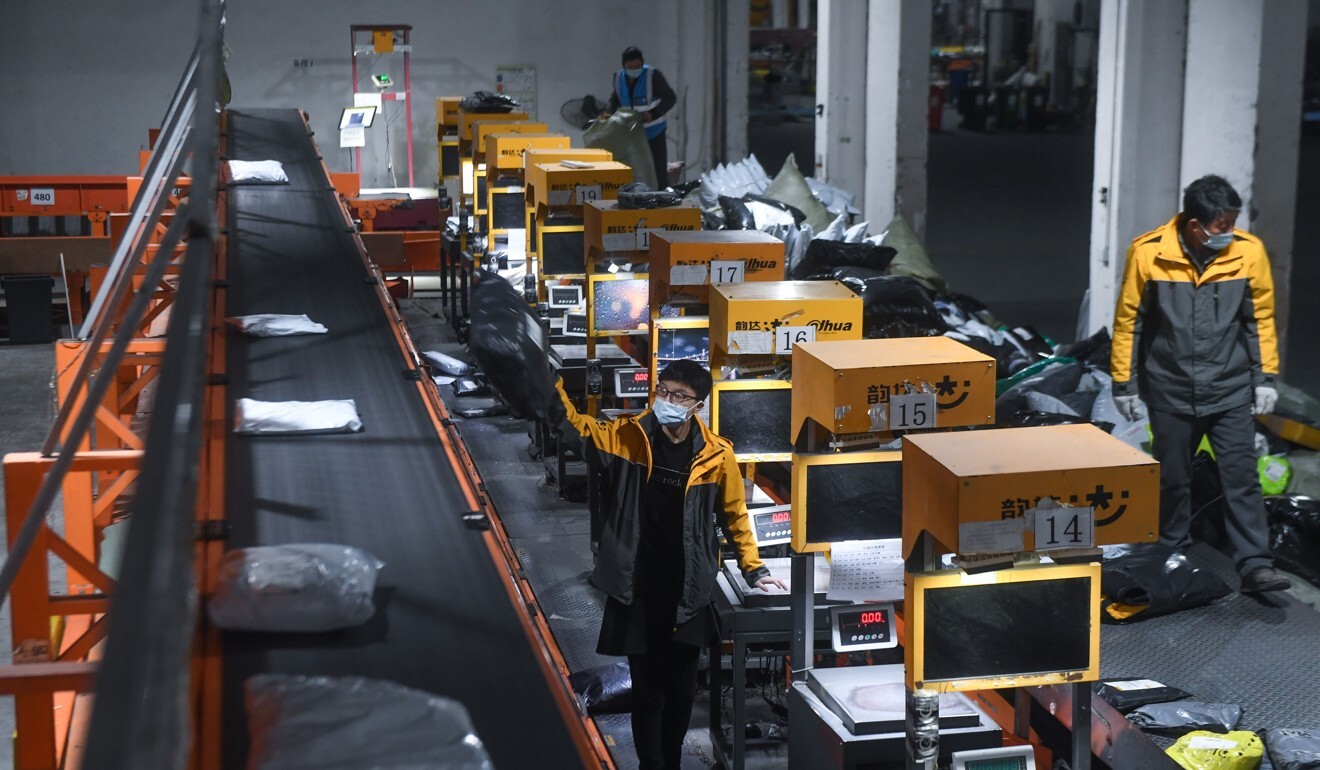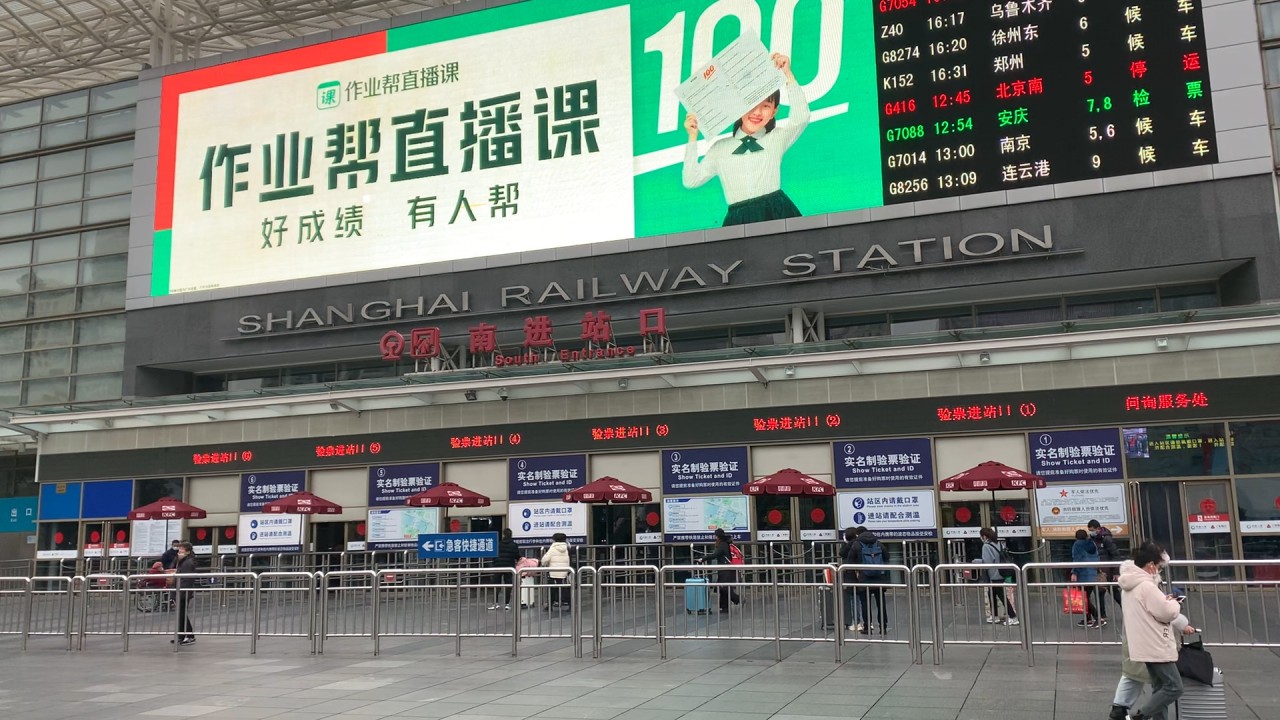
China set to be first country where e-commerce sales outstrip bricks-and-mortar retail in 2021
- Some 52.1 per cent of China’s overall retail sales are expected to come from e-commerce transactions this year, according to research firm eMarketer
- The pandemic boosted online sales that were already growing at a steady clip thanks to the rapid digitalisation of traditional trade-in China, experts say
The Chinese retail market is poised to become the first in the world to be dominated by e-commerce transactions as Lunar New Year retail sales beat expectations amid a pandemic-driven economic slowdown.
Research firm eMarketer expects 52.1 per cent of China’s total retail sales to come from e-commerce transactions in 2021, increasing from 44.8 per cent last year.
“That means that for the first time anywhere, a majority of retail sales for an entire country will transact online,” said the firm in a report.
No other country comes close to China in terms of e-commerce sales. South Korea is expected to see 28.9 per cent of its retail market based online this year, while the United States will hit 15 per cent, the report said.

Throughout 2020 retail sales remained subdued, but rose towards the end of the year as consumer spending confidence recovered from the impact of the coronavirus, the ministry said. This occured alongside a surge in industrial activity and a broader economic rebound.
Deliveries for online shopping – mostly alcohol, food, small home appliances and pet food – quadrupled compared to the same holiday period in 2019, Wang said citing data from Cainiao Smart Logistics.
China seemingly reached a behavioural tipping point over the past few years, wherein e-commerce enthusiasm accelerated rather than levelled off
The pandemic has boosted online transactions that were already growing steadily thanks to China’s ubiquitous e-commerce platforms like Alibaba, which owns the South China Morning Post; innovative digital payments systems such as Tencent’s WeChat Pay; a “nearly limitless” supply of low-cost delivery services manned by migrant labourers; and an agile smartphone-driven shopping culture, eMarketer said.
“China seemingly reached a behavioural tipping point over the past few years, wherein e-commerce enthusiasm accelerated rather than levelled off,” eMarketer said.
“While the pandemic did not create this trend, it certainly buttressed it, and China’s most recent e-commerce boom did not decelerate even after the country got a handle on the virus and the economy fully reopened.”
EMarketer said bricks-and-mortar sales would likely fall by 9.8 per cent this year, after an 18.6 per cent drop last year, while e-commerce sales grew 27.5 per cent in 2020 and would likely lift by another 21 per cent in 2021.
“Chinese consumers are spoiled by e-commerce retailers, with high-touch presales and after-sales customer services, swift last-leg logistics, convenient online payment options. Just to name a few,” said Ophenia Liang, director of digital marketing agency Digital Crew.
The pandemic has largely accelerated the expansion of e-commerce and the digitalisation of traditional trade-in China
“Hence the speed of e-commerce adaptation was exponential in the recent decade in China. Additionally, social media sprouted across the digital landscape in China and even ventured overseas, providing extra boosts for e-commerce.”
Increased e-commerce sales also mean more business-to-business trade, a growing sector that is competing strongly with traditional import and export, said Diane Wang, founder of cross-border business DHgate.
Last month, Chinese Customs said cross-border e-commerce imports and exports last year totalled 1.69 trillion yuan, an increase of 31.1 per cent. Total exports transacted on e-commerce platforms rose more than 40 per cent to 1.12 trillion yuan while imports trade on e-commerce sites rose 16.5 per cent to 570 billion yuan.

02:45
Coronavirus pandemic puts the brakes on China’s usual Lunar New Year travel rush
“The pandemic has largely accelerated the expansion of e-commerce and the digitalisation of traditional trade-in China,” Wang said.
“Cross-border e-commerce will play a more and more important role in promoting international trade-in 2021 since digital transformation has emerged as a key pathway to mitigating the impact [of the pandemic] on traditional trade … I believe sales volume in cross-border e-commerce will account for over 30 per cent of China’s foreign trade-in 10 years.”
In a survey conducted by investment firm CICC last month, an e-commerce platform serving small and medium-sized export and import companies said its trading clients have filled up their orders between January to May this year.
The only deterrents to these traders taking on more orders were changes in exchange rates and rising freight costs which could hurt profit margins.

